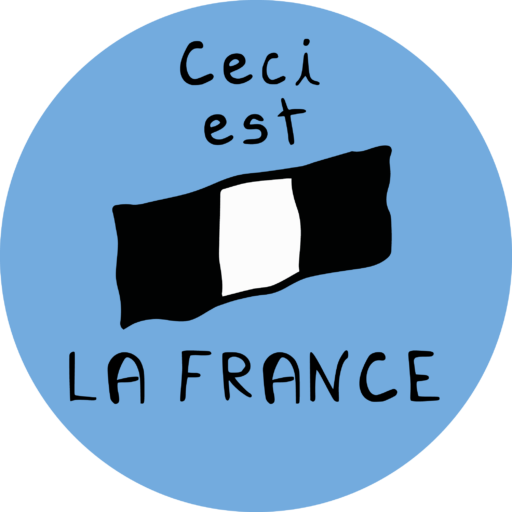How to pronounce any difficult French words
How to Pronounce Any Difficult French Word
A clean, practical method you can reuse for any tricky French word, with a case study on “Hennebont”.

The charm and challenge of French pronunciation
Let’s be real: French is one of those languages that’s beautiful to listen to, but intimidating to speak. One moment, you’re confidently reading a word off a menu, and the next, a local is chuckling because you just butchered the name of a small village. Sound familiar?
French pronunciation is a unique beast. Silent letters, nasal vowels, gliding syllables, it’s not just about spelling; it’s about rhythm, flow, and feel. But don’t worry. If you've ever stumbled over names like Hennebont or Auxerre, you're in the right place. This guide will help you break down any tricky French word using logic, phonetics, and a touch of intuition.
By the end, not only will you understand why Hennebont is pronounced “Non,” but you'll have a rock-solid strategy to tackle any French tongue-twister like a pro.
The Unique Nature of French Pronunciation
French is a phonetic language, but it doesn’t behave like one at least not in a way that English speakers expect. Unlike English, where spelling often aligns with pronunciation (sort of), French throws in silent letters, liaison rules, and sounds that seem impossible at first.
Take the word “fils” (son). That final "s"? Totally silent. Or how about “beaucoup” (a lot)? It ends in a "p" but you’ll never hear it. These are the quirks that make French elegant yet puzzling. And that’s why you need a method to break things down.
Step-by-Step Method to Pronounce Any French Word
So, how do you approach a word like “Hennebont” or any other nightmare from a French road sign? Here’s a repeatable formula:
- Break it down syllable by syllable
- Look for silent letters (especially at the beginning and end)
- Examine vowel-consonant-vowel patterns
- Identify nasal sounds
- Mind the flow, not just the phonetics
If you do this consistently, even intimidating words will start to feel manageable.
Case Study: Hennebont
Let’s apply that formula to a real-world example, Hennebont, a small town in the Brittany region of France. On paper, it looks like a jumble: H-E-N-N-E-B-O-N-T.
But let’s slow it down and look at each part.
Prefer watching on YouTube? Open the video.
Silent Letters in French
The word begins with an H. And here’s the first rule of French: H is never pronounced. Seriously, never. It’s like it doesn’t exist. So we toss it out right away. No need to say it, no need to acknowledge it.
Then we have a T at the end. In 90% of French words, final consonants are silent, unless followed by a liaison. So guess what? That T is dead weight too.
Now we’re working with: ennebon. Let’s keep going.
Understanding E in Different Contexts
In French, the letter E is incredibly flexible. It changes sound based on its environment. The first E in Hennebont comes before NN, a double consonant. That gives it a short, closed "è" sound, like in “fête”.
Then there’s another E, followed by B + O. This E is pronounced like "eu" (similar to the French word “peur” or fear). Why? Because a single consonant followed by a vowel softens the E sound.
Put that together and you’ve got: [ɛn][əb]
Double Consonants and Their Effects
In French, double letters don’t mean double sounds. NN just strengthens the nasal quality a bit but doesn’t require you to linger on the N. Think of it more as a way to change the sound of the vowel before it.
So now we’re phonetically closer to "en" + "eub". But we’re not done yet.
French Nasal Sounds: The ON in Hennebont
Here comes the magic: ON in French is a nasal vowel. And nasal vowels are a hallmark of the language. They involve shaping your mouth for the vowel while pushing air gently through your nose. It’s like speaking while having a cold on purpose. Learn more about nasal vowels here.
So "bon" becomes “bõ”, one syllable, one sound. You don’t say the N, but you still feel it in your nose.
Combine all parts:
Hennebont → en + eub + õ
French Vowels and Their Pronunciations
French vowels are slippery. One letter can make three or more sounds depending on context, placement, and surrounding letters. Let’s break them down so you never get caught off guard again.
- A – Often sounds like "ah" as in papa
- E – The trickiest; can sound like uh, ay, eh, or even be silent
- I – Typically sounds like "ee" as in machine
- O – Usually pronounced "oh" but can also become nasal
- U – Not “oo” like in English, but more like pursing your lips while saying “ee”
Then come vowel combinations that act like different letters altogether:
- AI = sounds like “eh”
- AU = sounds like “oh”
- OU = sounds like “oo”
- EU / ŒU = the famous French "eu" sound, like in peur or sœur
In Hennebont, we saw a simple “E” behave two different ways because of what followed it. That’s the key takeaway: what comes next determines the vowel's fate.
If you want deeper phonetic support, keep an IPA chart handy.
The French Nasal Vowel System
Ah, nasal vowels. The “make or break” feature of French pronunciation. There are four main nasal sounds:
- AN / AM = like “ah~”
- ON / OM = like “oh~”
- IN / IM / EIN / AIN = like “eh~”
- UN / UM = like “uh~”
You don’t pronounce the N or M; instead, you funnel air through your nose. It’s an odd feeling at first, but once you get it, it transforms your French.
Some examples to practice:
- Bon (good) → “Bõ”
- Pain (bread) → “Pã”
- Un (one) → “Uh~”
- Hennebont → “Nuh-bõ”
Here’s a tip: mimic the sound you make when you have a stuffy nose. That’s your nasal base.
How to Identify Silent Letters in French
This is a must for every learner. French is littered with silent letters, especially at the end of words. Here’s a cheat list:
- Often silent: E, S, T, D, X, Z
- Sometimes silent: P, G, N, B
- Rarely silent: L, R, M
The word Hennebont has two silent letters:
- H at the beginning → Always silent in French
- T at the end → Typically silent unless followed by a liaison
When in doubt, check if the word ends in a consonant that isn’t pronounced unless the next word begins with a vowel (that's the liaison rule).
Consonant Sounds That Confuse Learners
French consonants can be deceptively simple. Here are a few that need extra attention:
- B – Press lips together, engage vocal cords, release a soft burst of air
- V – Slightly vibrated, teeth touch bottom lip
- D – Softer than English D, tongue lightly taps behind upper teeth
- R – The French “R” is throat-based, a soft gargle from the back of the mouth
In Hennebont, the B is crucial. To pronounce it clearly:
- Close your lips
- Use your vocal cords
- Let out a quick puff of air
It's subtle but important. The French “B” isn't as explosive as in English, but it's firm.
The Importance of Mouth Shape in French Sounds
French isn’t just spoken, it’s shaped. The way you form your mouth can dramatically change the sound you produce.
When we talk about nasal vowels like ON, the mouth needs to stay rounded while the nose does the airflow work.
Try this:
- Say “O” with your lips pursed
- Without moving your lips, push some of the sound through your nose
You’ll feel it in your sinuses, that’s the nasal ON
This mouth-nose coordination is especially useful when saying “bon,” “non,” or, you guessed it, Hennebont.
Use of Rhythm and Flow in French Speech
French pronunciation is about more than isolated sounds. It’s about rhythm and fluidity. Words link together, letters melt into each other, and entire syllables seem to vanish in casual speech.
The key is not to pause between syllables too much. French favors legato flow, smooth transitions that give the language its musical feel.
In Hennebont, we don’t say “Hen-ne-bont,” with three distinct beats. We say: nuh-bõ, a swift glide from one nasal sound into the next.
Practice saying full phrases out loud to get the feel:
- Je suis en Hennebont
- Il habite à Hennebont
Notice how the words connect?
Common Pronunciation Pitfalls for English Speakers
- Overpronouncing final letters
English tends to articulate every letter. French doesn’t. So resist the urge. - Misreading vowels
An “E” in French is never “ee” like in English. Context is everything. - Ignoring nasal sounds
If you skip nasal vowels, you’re saying something completely different. - Saying the H
It’s silent. Always. Don’t say it. Don’t even whisper it. - Forgetting to link words
Liaisons can make or break how natural your French sounds.
Top Tips for Mastering Difficult French Words
- Listen to native speakers daily – Use podcasts, YouTube, movies
- Repeat what you hear – Out loud. Yes, even in public.
- Break down complex words – Like we did with Hennebont
- Use phonetic transcription – Helps decode strange spellings
- Practice with apps – Tools like Forvo, Speechling, and YouGlish are gold
- Record yourself – Compare your sound to native speakers
- Use real-world names – Places like “Hennebont” make for perfect practice
Useful Tools and Resources to Practice
| Tool | Description |
|---|---|
| Forvo | Hear native pronunciation of any word |
| YouGlish | Listen to real people using the word in context |
| Speechling | Guided practice with pronunciation coaches |
| IPA Charts | Understand International Phonetic Alphabet for French |
| YouTube Video | Like this one |
Final Thoughts
French pronunciation can be daunting but it doesn’t have to be. With the right method, a little patience, and regular practice, you can pronounce even the most difficult French words like a native.
Use real examples like Hennebont to build your skills. Break the word apart, identify vowels and consonants, focus on silent letters, and most importantly, don’t be afraid to sound silly at first.
Start speaking out loud. Record yourself. Listen, repeat, refine.
Bon courage and don’t forget: the French "H" is your friend… because it’s silent!
FAQs
1. What is the hardest French word to pronounce?
Words like anticonstitutionnellement or serrurerie are notoriously tough. But often, place names like Hennebont or Auxerre trip learners up more due to regional pronunciation quirks.
2. Are there rules for silent letters in French?
Yes. Final consonants like E, S, T, and D are often silent. The letter H is always silent, and some internal letters are dropped in fast speech. See liaison in French.
3. How can I pronounce French nasal vowels correctly?
Focus on mouth shape and nasal airflow. Say “on” while pretending you have a cold. Practice with words like “bon,” “pain,” and “un.” Learn more about nasal vowels here.
4. What apps help with French pronunciation?
Top picks include Forvo, YouGlish, Speechling, and of course YouTube.
5. Why is "Hennebont" pronounced the way it is?
It follows classic French pronunciation rules: silent H and T, variable E sounds, nasal “on,” and linked syllables. That’s why it’s pronounced "Nuh-bõ". Rewatch the explanation in the video.






Responses